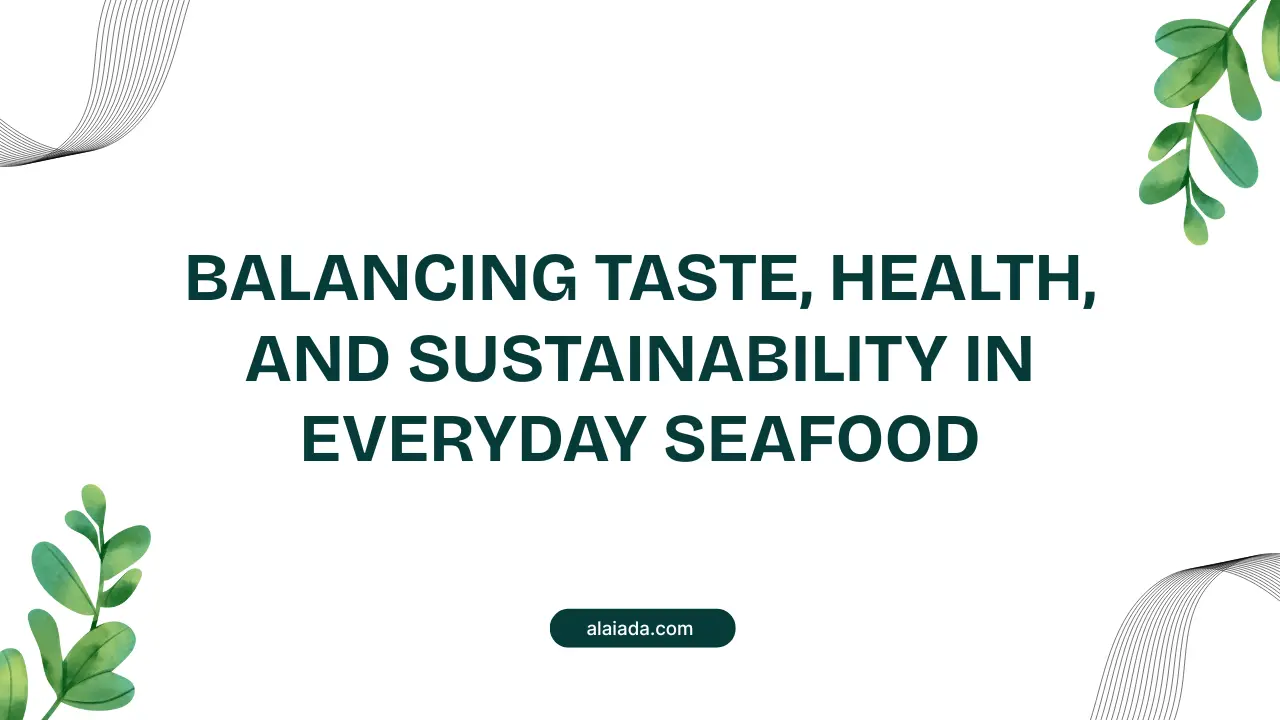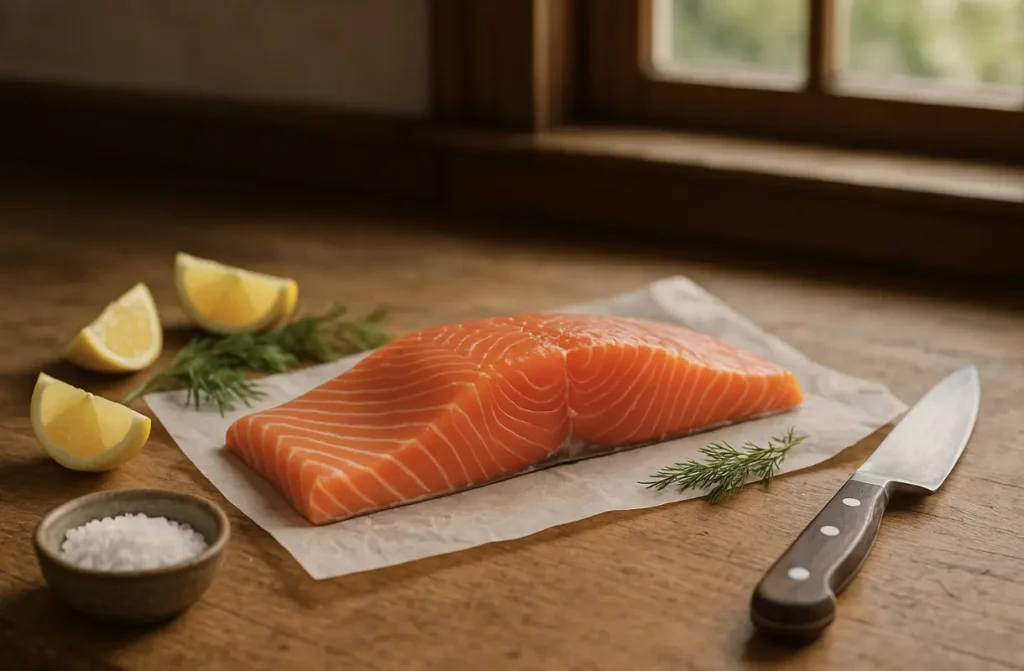Balancing Taste, Health, and Sustainability in Everyday Seafood

Seafood holds a unique place in global cuisine. From quick weeknight dinners to elaborate holiday feasts, fish and shellfish provide flavor, nutrition, and cultural connection. Yet as consumers become more aware of where their food comes from, questions about sourcing, sustainability, and health play a bigger role in purchasing decisions.

Nowhere is this more evident than in the discussion around salmon—a species that has become both a culinary favorite and a case study in how food choices intersect with larger environmental and lifestyle concerns.
Salmon is celebrated for its versatility. It can be roasted with herbs for a simple meal, smoked for brunch, tossed into pasta, or even enjoyed raw in sushi and poke. Its appeal lies in both its flavor and its reputation as a nutrient-dense protein. But not all salmon are the same. Different species, habitats, and production methods shape the taste and nutritional value of what ends up on the plate. For anyone interested in balancing health, flavor, and sustainability, understanding these differences is essential.
A major distinction lies between farmed salmon and wild caught salmon. The former is raised in controlled environments, where feed, growth, and availability can be managed year-round. The latter grows in natural ecosystems, feeding on smaller fish, plankton, and other marine resources. This difference influences not only flavor and texture, but also the nutritional composition and environmental footprint of each option. For the everyday consumer, learning the nuances behind these choices helps in selecting seafood that aligns with both personal values and dietary goals.
Flavor First: What the Palate Tells You
Taste is often the most immediate factor when choosing seafood. Wild salmon tends to have a firmer texture and stronger flavor, often described as more complex or “ocean-forward.” Its natural diet and active lifestyle in rivers and seas contribute to this depth. Farmed salmon, on the other hand, usually has a higher fat content, resulting in a milder, buttery profile. This makes it appealing to those who prefer a softer texture and less pronounced flavor.
For home cooks, this distinction matters. A delicate fillet of farmed salmon might pair well with creamy sauces or subtle seasonings. A robust wild fish can hold its own on the grill or stand out in recipes where the flavor of the fish is central. Neither is objectively better—it comes down to culinary intent and preference.
Health on the Plate
Nutritionally, salmon is widely regarded as a powerhouse. Rich in omega-3 fatty acids, high-quality protein, B vitamins, and minerals such as selenium, it supports cardiovascular health, brain function, and overall wellness. But just as flavor varies, so do nutritional profiles.
Wild salmon often contains slightly higher levels of omega-3s and lower overall fat content. Farmed salmon, with its controlled feed, generally has more total fat, which raises calorie counts but can also make the fish more filling. The farming industry has improved significantly, reducing reliance on antibiotics and enhancing feed quality, which has helped narrow the nutritional gap between the two.
Ultimately, both farmed and wild salmon offer substantial health benefits, making either a strong choice for those prioritizing nutrient-rich meals. The key lies in moderation and variety, ensuring seafood complements a diet that is diverse and balanced.
The Sustainability Question
Beyond personal taste and nutrition, consumers increasingly factor in sustainability. Healthy oceans and rivers are critical not only for salmon populations but for the broader marine ecosystem. Overfishing, habitat degradation, and climate change all threaten natural stocks, while certain farming practices can pose risks to water quality and surrounding environments.
Well-managed fisheries for wild salmon implement strict quotas and seasonal limits to maintain healthy populations. Farmed salmon producers are improving practices as well, investing in better feed sources, reducing environmental impacts, and pursuing certifications to demonstrate responsibility. Choosing seafood from reputable, transparent suppliers is one of the most effective ways consumers can support sustainable practices.
For those who care deeply about environmental footprint, seeking out responsibly sourced wild caught salmon or farmed options certified by sustainability programs provides peace of mind. This ensures that the fish on the table has been harvested or raised in ways that respect long-term ecological balance.
Practical Tips for Everyday Buyers
Balancing flavor, health, and sustainability begins at the market or fish counter. Labels, certifications, and trusted vendors make a difference. Here are some practical strategies:
- Check the species and source: Knowing whether salmon is Sockeye, Chinook, Coho, or Atlantic, and whether it’s farmed or wild, provides insight into taste and texture.
- Look for certifications: Labels from recognized sustainability programs indicate responsible practices.
- Consider fresh vs. frozen: Flash-frozen fish often retains high quality and may be a smart choice outside peak seasons.
- Inspect appearance and smell: Vibrant flesh, firmness, and a fresh sea scent are signs of quality.
- Ask your fishmonger: Trusted sellers can explain origins, handling, and storage methods.
These habits empower consumers to make decisions that align with both culinary goals and personal values.
Everyday Seafood Beyond Salmon
While salmon often dominates seafood conversations, the principles of balancing taste, health, and sustainability apply broadly. Species like mackerel, sardines, and anchovies are rich in nutrients and generally considered more sustainable due to their abundance. Shellfish such as mussels and clams can be excellent eco-friendly options, as they filter water and require minimal feed. Diversifying seafood choices reduces pressure on popular species and introduces new flavors to the table.
Bringing It All Together
Seafood offers a unique opportunity to connect what we eat with the health of our bodies and the health of our planet. Salmon, as one of the most popular fish in kitchens worldwide, symbolizes the choices consumers face every day. Whether selecting farmed or wild, frozen or fresh, premium or affordable, each decision reflects a balance of taste, nutrition, and environmental responsibility.
The goal is not to choose one option exclusively but to remain mindful. Experimenting with different types of salmon, incorporating a variety of seafood into meals, and paying attention to sourcing can elevate not only the dining experience but also one’s role as a conscious consumer.
Conclusion
Balancing taste, health, and sustainability in everyday seafood is less about rigid rules and more about thoughtful choices. Salmon provides an excellent lens through which to explore these trade-offs, but the lessons apply across the seafood spectrum. By staying informed, asking questions, and embracing diversity on the plate, consumers can enjoy meals that are delicious, nourishing, and responsible.
From family dinners to restaurant outings, the seafood we select tells a story about priorities and values. With a little awareness, it is possible to enjoy the best of both worlds—meals that delight the senses while supporting long-term health and ecological balance.











